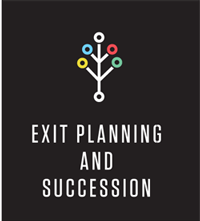Exit Planning and Succession II - Eight Disciplines of a Successful Exit
Editor's Note: This article and the feature An Employee Partnership mark part two of Glass Magazine’s multi-part Exit Planning and Succession series. The first in the series is, “A Successful Exit: Capture Business Wealth and Pass the Baton to the Next Generation;” the next article in the series will run in the May issue. If you have an exit or succession planning story to share, contact Editor Katy Devlin, kdevlin@glass.org.
 An owner’s exit from a business will probably be the largest financial event of their life. Further, harvesting the illiquid wealth trapped in a business can also be one of the most complex transactions an owner will face.
An owner’s exit from a business will probably be the largest financial event of their life. Further, harvesting the illiquid wealth trapped in a business can also be one of the most complex transactions an owner will face.
Key to navigating this process is gathering the best information to minimize risk, to make correct decisions, and to understand the financial and strategic control issues required to replace an owner’s income. This process protects an owner’s hard-earned wealth and legacy.
To successfully exit a business, an owner will need to develop a comprehensive, multifaceted exit plan. The exit plan necessitates that owners combine eight business disciplines, from valuation analysis to succession to tax planning. Throughout this process, owners will need to seek the input of a range of advisors, including attorneys, accountants, estate planners, insurance advisers, financial planners and business consultants.
Owners might also seek services of an exit planner to act as a process consultant and help guide owners through the various disciplines working with the numerous collaborators. The exit planner moves an owner down the exit path to reach goals, reduce risk and achieve the best result by coordinating the various disciplines.
Before beginning the exit process and seeking input from advisors, owners should fully understand the eight disciplines that make up the exit planning process.
An owner may feel a little disjointed with the different discussions among advisers. Many times the conversations are focused in their transactional space and key area of practice providing one fragmented aspect of an exit plan, not a holistic solution coordinating and encompassing all disciplines. An exit planner can ease this process and help owners address these challenges.
1 Contingency planning
Contingency planning addresses what will happen to an owner’s business stock and to their family if they die unexpectedly. Contingency planning is often framed in terms of a buy-sell agreement.
2 Business planning
Business planning in anticipation of selling the business involves discussion of the timing of a business’s sale, strength of the cash flows and business value drivers.
3 Valuation analysis
A valuation analysis provides information about the worth of a company within a range of values. The valuation analysis should only be completed by an accredited business appraiser. The valuation analysis is central to meeting the value gap and replacing income.
4 Succession planning
Succession planning requires that an owner consider how to replace themselves with strong managers and management team and move them into leadership for the next business generation.
5 Financial planning
Financial planning is required for an owner to discuss income replacement and harvesting their business in retirement. During this process, an owner addresses how their primary asset, the illiquid business, will serve as a critical component for meeting their financial needs.
6 Estate planning
Estate planning addresses how a business owner will transfer privately held stock to children and future generations in a tax-efficient manner by protecting wealth in trusts. This is an important conversation that can assist an owner in protecting wealth against estate taxes. Owners should seek input from their attorney in estate planning.
7 Tax planning
Tax planning addresses the various tax implications to an owner, to the business and to the estate; and tax reduction strategies. This is a critical aspect of business transfers, as there is the possible exposure to over 55 percent taxation in such transactions.
8 Emotional attachment
While a less traditional “discipline,” owners must also address and consider issues of emotional and financial attachment to their business during the exit planning process. If an owner is having difficulty trying to figure out the when, who and how particulars of their exit, they are still stuck in the business. An owner may have difficulty delegating, training, letting go and seeing themselves outside the business in another useful endeavor. Most advisers are not trained to measure and understand this level of emotional and financial attachment to the business. An exit planner can assist an owner in this area.

